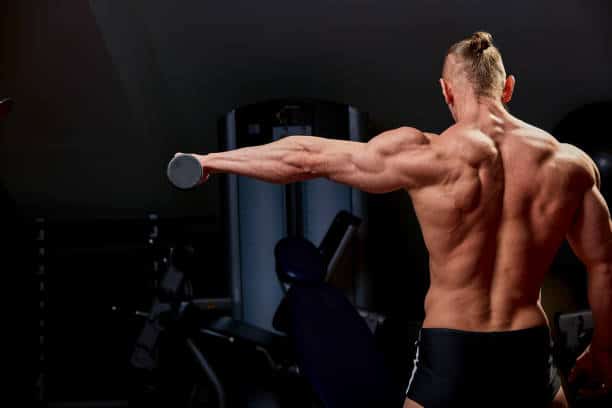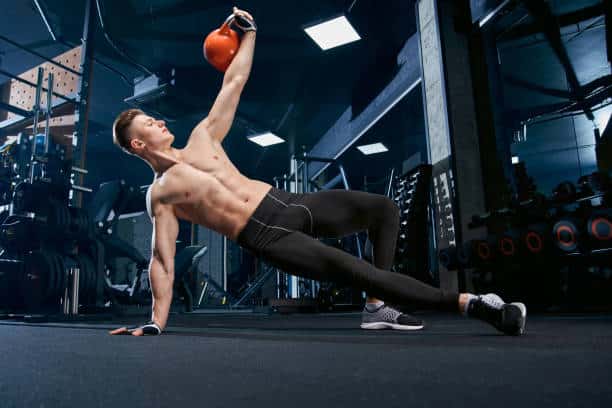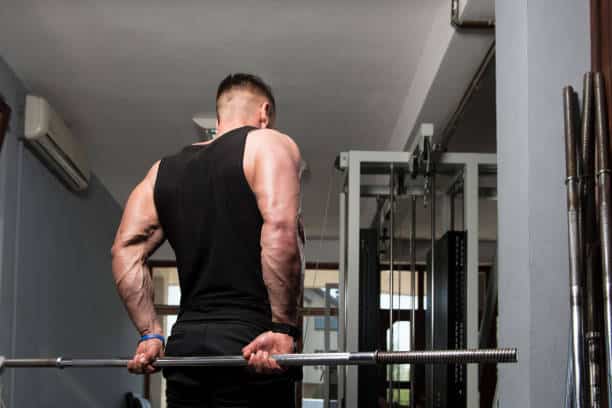
Effective Pronator Muscle Workout Tips & Tricks
Did you know that 70% of your grip strength actually comes from the muscles in your forearm? This fascinating statistic highlights just how crucial pronator muscle workouts are for anyone aiming to improve forearm strength and boost overall performance.
In this article, we’ll explore the essentials of training your pronator muscles. Whether you’re a fitness enthusiast or an athlete, understanding how these muscles contribute to your grip and forearm stability can make a significant difference. We’ll cover effective exercises and techniques for building forearm strength and offer practical tips to enhance your workout results.
You’ll also learn how these exercises can benefit you in real-world scenarios, such as improving your performance in climbing, weightlifting, and other sports. By focusing on targeted grip enhancement, you’ll elevate your fitness routine and make everyday tasks easier.
Let’s dive into strengthening your pronator muscles and unlocking new levels of fitness and functionality! These often-overlooked muscles play a crucial role in wrist, forearm, and grip strength, making them essential for everything from daily tasks to athletic performance. By incorporating targeted exercises like wrist pronation drills or resistance band twists, you can improve muscle balance effectively and enhance overall stability. Strengthening your pronators not only reduces the risk of injury but also supports better form and efficiency in other movements.
Understanding the Pronator Muscle

The forearm is home to several important muscles, but when it comes to rotation, the pronator teres and pronator quadratus are key players. These muscles work together to enable wrist movements and fine hand functions that are crucial for daily activities.
The pronator teres are located in the upper forearm, extending from the humerus to the radius. This muscle is essential for pronation, which is the action of turning the forearm so that the palm faces downward.
Conversely, the pronator quadratus is a square-shaped muscle situated near the wrist, connecting the ulna to the radius. It plays a significant role in larger rotational movements and provides stability to the forearm, which is important for tasks like typing or gripping.
Understanding the functions of these muscles helps optimize your workouts and prevent injuries. Weak or tight pronator muscles can cause discomfort and limit functionality. Strengthening and stretching these muscles is vital for maintaining forearm health and enhancing performance.
| Muscle | Location | Function |
|---|---|---|
| Pronator Teres | Upper Forearm | Forearm Pronation |
| Pronator Quadratus | Near the Wrist | Stability and Rotational Movements |
Benefits of Strengthening the Pronator Muscle
Strengthening the pronator muscles provides several benefits that can greatly enhance both your performance and overall well-being. By targeting these muscles, you’ll experience notable improvements in grip strength, which can boost your ability to perform a range of tasks more effectively. This enhanced grip strength contributes to better performance in various activities and daily functions.
Improved Grip Strength
Building strong pronator muscles directly enhances grip strength, which is vital for athletes. Improved grip strength can significantly benefit activities such as rock climbing, weightlifting, and racket sports. Research indicates a clear link between grip strength and better performance in these sports, underscoring the importance of focused training for the pronator muscles.
Enhanced Forearm Stability
Focusing on forearm conditioning, especially targeting the pronator muscles, enhances forearm stability. This stability is crucial for activities that demand precise control and strength, such as gymnastics and martial arts. Additionally, well-conditioned forearms offer vital wrist support during weight-bearing exercises, reducing the risk of injuries and boosting overall workout efficiency.
Effective Pronator Muscle Workout Techniques

Targeting the pronator muscles is crucial for enhancing your grip and wrist rotation, both of which are essential for daily activities. To elevate your forearm workout, incorporating exercises specifically aimed at strengthening the pronator muscles is key. Two highly effective exercises for this purpose are the Pronator Curl and the Wrist Roller. Let’s explore how these exercises can help you build stronger, more functional forearms.
Pronator Curl Exercise
The Pronator Curl is a key exercise for strengthening the pronator muscles. Begin by holding a light dumbbell in each hand, with your palms facing up. Slowly rotate your wrists so that your palms face downward. This twisting motion effectively engages the pronator muscles. Aim for three sets of 12-15 repetitions to get the most out of your forearm workout.
To ensure proper form, keep your elbows close to your body and control your movements carefully. This approach maximizes benefits and minimizes the risk of injury. Fitness experts often suggest varying the weights or angles to keep the muscles challenged and promote continuous progress.
Wrist Roller
The Wrist Roller is another effective exercise for strengthening both the wrists and pronator muscles. To perform this exercise, you’ll need a wrist roller device, which typically comes with an attached weight. Hold the device with both hands, extend your arms straight in front of you, and roll the weight up by rotating your wrists. Then, slowly roll the weight back down.
This exercise not only builds forearm strength but also enhances endurance. Physiotherapists recommend performing three to four sets, with sufficient rest between sets to prevent overstrain. Beginners should start with lighter weights and gradually increase them as they develop strength and confidence in their pronator muscle workouts.
Things to Avoid During Pronator Muscle Workouts

When focusing on pronator muscle workouts, avoiding common mistakes is essential for a safe and effective training session. Overtraining is a major concern; it can lead to muscle fatigue and injury, so it’s important to allow your muscles sufficient rest between workouts.
Ignoring pain signals is another risk; pain is your body’s way of indicating something is wrong. If you experience unusual pain, stop immediately, reassess your technique, or consult a health professional.
Maintaining proper technique is crucial for both effectiveness and injury prevention. Incorrect form can diminish the benefits of your workout and increase injury risk. Keeping your wrist in a neutral position during exercises helps maintain proper alignment and prevents unnecessary strain.
Here are some simple workout safety tips to keep in mind:
- Start with a proper warm-up to prepare your muscles.
- Maintain correct posture and form during exercises.
- Stay hydrated and take breaks as needed.
- Listen to your body and avoid pushing through pain.
- Include a cool-down phase to help your muscles recover.
To provide a clearer understanding, here’s a comparison of common workout mistakes and their corrections:
| Common Workout Mistake | Correction |
|---|---|
| Overtraining without rest | Incorporate rest days to allow muscle recovery |
| Ignoring pain signals | Stop and reassess, consult a professional if needed |
| Poor technique | Focus on proper form and get guidance if necessary |
You may guarantee workout safety and efficiently build your pronator muscles by avoiding these typical workout blunders and according to these exercise injury prevention suggestions.
Incorporating Pronator Muscle Workouts into Your Routine
It’s important to plan how you’ll incorporate pronator muscle workouts into your current exercise regimen in order to get the best benefits. Initiate a vigorous warm-up and conclude with stretching exercises to optimize muscular performance and recovery.
Warm-Up Prior to Exercises
Before working out your pronator muscles, do a dynamic warm-up to increase blood flow and get your muscles ready for action. Try doing stretches for your finger flexors and wrist circles. A thorough warm-up improves the range of motion, which further helps to prevent injuries.
Cool Down and Stretch
Stretching after an exercise is crucial for muscle repair. Stretches like the wrist extensor and forearm flexor should be performed after pronator muscle exercises to improve muscle flexibility and lessen discomfort. Lighter exercises like walking or moderate running are part of the cooling down process and can help to relax the muscles in general.
| Exercise | Frequency | Duration |
|---|---|---|
| Pronator Curl | Three times a week | 3 sets of 12 reps |
| Wrist Roller | 2 times a week | 3 sets of 15 reps |
| Dynamic Warm-Up | Before every session | 5-10 minutes |
| Post-Workout Stretching | After every session | 10 minutes |
Tracking Your Progress
Achieving your fitness goals can be incredibly rewarding, especially when you can track your progress in real-time. Monitoring your workout progress is crucial for staying motivated and refining your techniques. Effective tracking methods include taking progress photos, recording weights and reps, or using fitness apps that chart your improvements over time.
I’ve found that keeping a dedicated workout notebook is highly beneficial. It allows me to look back and see my progress, providing a tangible sense of accomplishment. Additionally, digital tools like MyFitnessPal or Garmin can consolidate your records in one place. These apps often have features specifically designed for tracking muscle group performance, which is ideal for monitoring your pronator muscle workouts.
Setting realistic milestones is another key aspect of progress tracking. Personal trainers often suggest setting small, achievable goals, such as increasing the weight in your pronator curl or performing more reps in your wrist roller routine. Celebrating these milestones, no matter how minor, can boost your motivation and keep you focused.
Finally, regularly reviewing and adjusting your workout plan is essential. As you progress, your body will adapt, and you may need to increase intensity or modify exercises to continue making gains. Consistent tracking helps you identify when it’s time to make adjustments, ensuring you stay on track toward your fitness goals. By adopting a systematic approach, you can make more informed decisions about your pronator muscle workouts and achieve more satisfying results.
FAQ
What are the pronator muscles, and where are they located?
The pronator muscles, comprising the pronator teres and pronator quadratus, are situated in the forearm. They function together to rotate the forearm and facilitate complex hand movements.
Why is it important to strengthen the pronator muscles?
Strengthening the pronator muscles boosts grip strength, improves forearm stability, and provides better wrist support. It also helps prevent injuries and enhances performance in sports and resistance training.
What exercises can I do to strengthen my pronator muscles?
Effective exercises for targeting the pronator muscles include the Pronator Curl and the Wrist Roller. These exercises help build both strength and endurance in the pronator muscles.
How often should I incorporate pronator muscle workouts into my routine?
It’s recommended to incorporate pronator muscle exercises into your routine 2-3 times a week. Ensure you balance these exercises with a proper warm-up and cool-down to prevent overtraining.
What are common mistakes to avoid during pronator muscle workouts?
Avoid overtraining, ignoring pain signals, and using improper techniques. Focus on maintaining proper form and listening to your body to prevent injuries.
How can I track my progress with pronator muscle workouts?
Track your progress by recording measurements, setting realistic goals, and using tracking tools. Celebrate milestones and adjust your workouts as needed to ensure continuous improvement.
Can pronator muscle exercises help with daily activities?
Yes, strong pronator muscles enhance grip strength and forearm stability, benefiting daily activities such as lifting, carrying, and performing repetitive hand movements.
What should I do before and after pronator muscle workouts?
Before workouts, engage in dynamic warm-up exercises to prepare your forearm muscles. After workouts, perform cooling-down stretches to aid recovery and prevent tightness.



